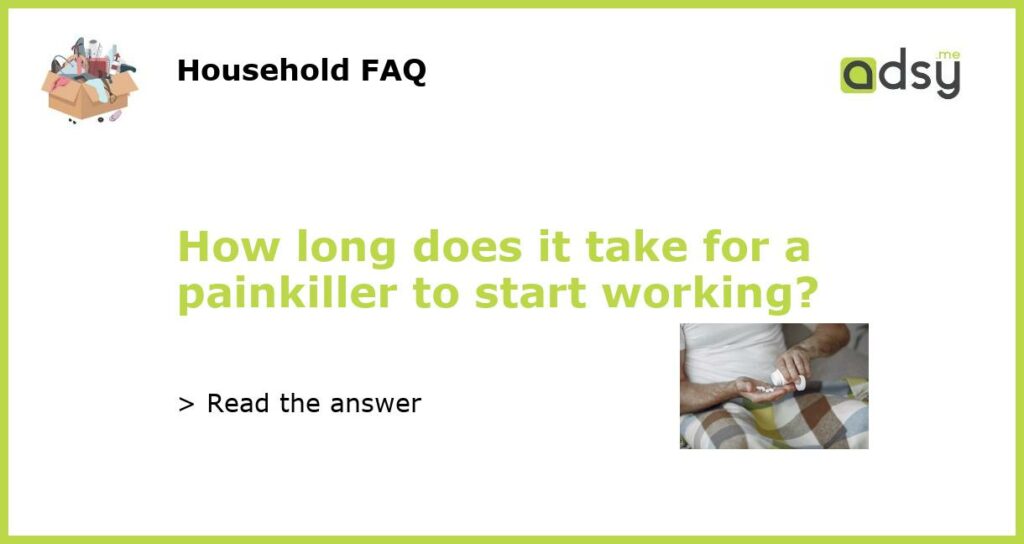What Factors Determine How Long a Painkiller Takes to Work?
When you’re in pain, all you want is relief, and you want it fast. Whether you’re suffering from a headache, backache, or muscle sprain, painkillers can provide the relief you need. But how long does it take for a painkiller to start working?
There are several factors that determine how quickly a painkiller will take effect. These factors include the type of painkiller, the form it’s taken in, the severity of the pain, and individual differences in metabolism and absorption.
The Type of Painkiller
Painkillers can be broadly classified into two categories: non-steroidal anti-inflammatory drugs (NSAIDs) and opioids. NSAIDs, such as ibuprofen and aspirin, work by reducing inflammation and blocking pain signals. They typically start working within 30 minutes to an hour. Opioids, on the other hand, are much stronger painkillers that work by binding to opioid receptors in the brain and spinal cord. They can provide immediate pain relief, but are associated with more side effects and a higher risk of addiction.
The Form of the Painkiller
The form in which a painkiller is taken can also affect how quickly it starts working. For example, a painkiller taken in liquid or chewable form may be absorbed more quickly by the body compared to a tablet or capsule. Alternatively, a painkiller applied topically as a cream or gel may take longer to take effect, as it needs to be absorbed through the skin.
The Severity of the Pain
The severity of the pain can also impact how quickly a painkiller takes effect. In general, if the pain is more intense, it may take longer for the painkiller to provide relief. This is because the body’s pain signaling pathways are more activated, and it may take more time for the painkiller to block these signals effectively.
Individual Differences in Metabolism and Absorption
Lastly, individual differences in metabolism and absorption can influence how quickly a painkiller starts working. Each person’s body is unique, and factors such as age, weight, and overall health can affect how quickly a painkiller is processed and absorbed. For example, someone with a faster metabolism may experience quicker relief compared to someone with a slower metabolism.
It’s important to note that while painkillers can provide temporary relief, they do not address the underlying cause of the pain. If you’re experiencing chronic or severe pain, it’s always best to consult a healthcare professional for a proper diagnosis and treatment plan.






